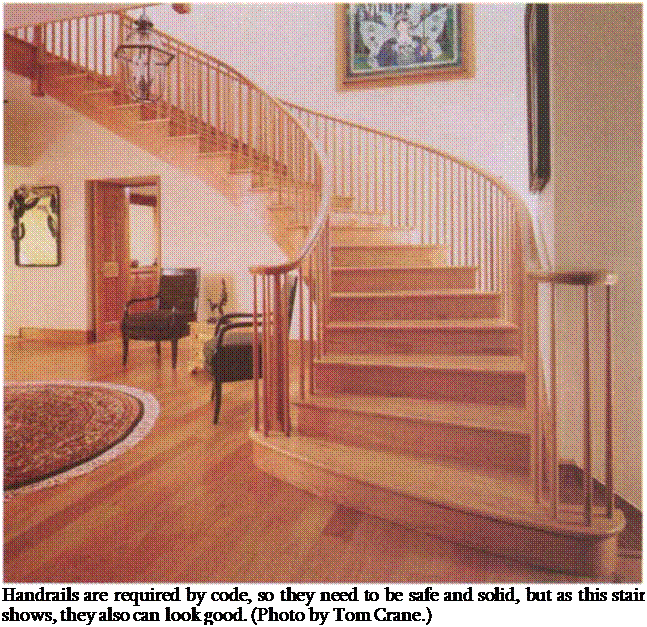HANDRAILS
Handrails and guardrails come in many shapes, sizes, and materials. Like a seat – belt on a car, they are necessities for safety, but they can also be the highlight of a set of stairs (see the photo on the facing page). So not only do they need to look good, but they also need to be designed safely and built solidly, whatever their style or material.
Stairs are the most dangerous part of a house, and most building codes address stair and handrail design to some extent (see the sidebar on p. 170). A safe handrail is a key part of a safe stairway, whether it is a simple rail mounted on the wall with brackets or an elaborate balustrade (a horizontal rail with evenly spaced uprights that extend down to the stair treads).
Building a simple handrail
Elaborate balustrades can be expensive to build, and their installation is outside the scope of this book. But a safe and
 |
sturdy handrail like the one that follows isn’t difficult to build and can do the job just as well. Depending on the particular style of stairs I’m building, I sometimes use this sturdy, easy-to-use and inexpensive design.
To begin, run a row of scrap 2×10 blocks up the stair slope when framing the stairs. Nail them in the walls between the studs so that their center is about 34 in. above the stair nosing. After the drywall has been hung, come back and snap a chalkline above the stairs exactly where the handrail will be placed, typically between 30 in. and 38 in. above the nosing of the stair. Then drill a 5/s-in.- or 3A-in.-diameter hole near the top and bottom of the stairs and about every
3 ft. between, going through drywall and into the blocking directly along the line. Cut off б-in. pieces of 5/s-in. or 3/4-in. hardwood dowel (depending on the size of the holes) and glue them firmly in the holes.
After the walls have been finished, cut the dowels to length at about 2 Vi in. Next, get a long piece of 2×2 handrail (straight-grained Douglas fir or clear pine works well) and round the corners, sanding it smooth. Then hold the rail in position next to the dowels and mark it for drilling (a helper is handy for this step). Drill 1-in.-deep holes into the rail, apply glue, and tap the rail onto the dowels, being sure to leave it 1V2 in. away from the wall.






Leave a reply